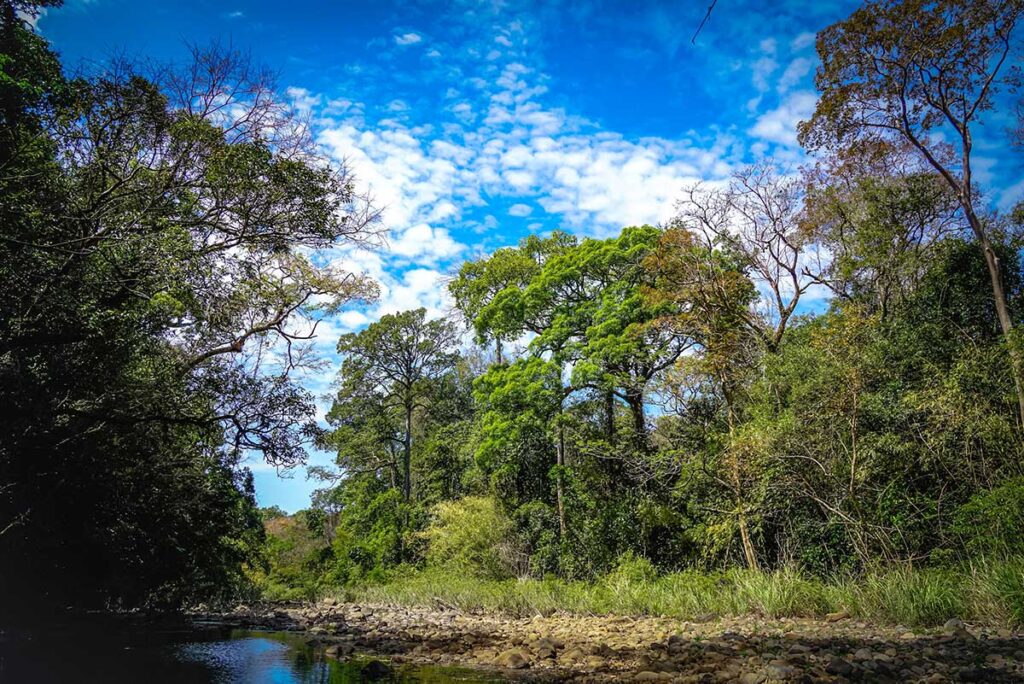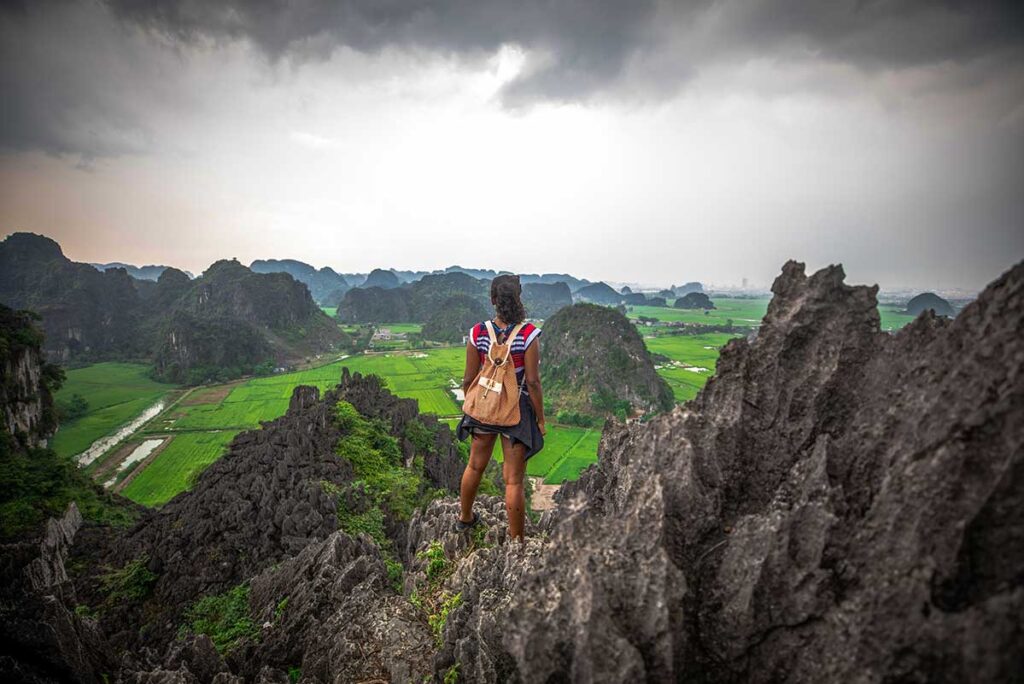What is Bu Gia Map National Park?
Bu Gia Map National Park is a vast protected area in southern Vietnam, created to safeguard rare species and headwater forests. Covering more than 26,000 hectares, it remains one of the least-visited parks in the country, offering a wilderness that feels almost untouched by tourism. The park plays a vital role in biodiversity conservation as well as in protecting important water sources for the region.
Location & Landscape
Bu Gia Map lies in Binh Phuoc Province, bordering Dak Nong Province to the east and Cambodia to the northwest. It sits at the southern edge of the Central Highlands, with altitudes rising to about 700 meters above sea level. The park is fed by several rivers, most notably the Dak Huyet and Dak Sam, which provide water for downstream hydroelectric projects like Thac Mo and Can Don. Its buffer zone adds another 15,000 hectares, forming a broad natural corridor along the border.
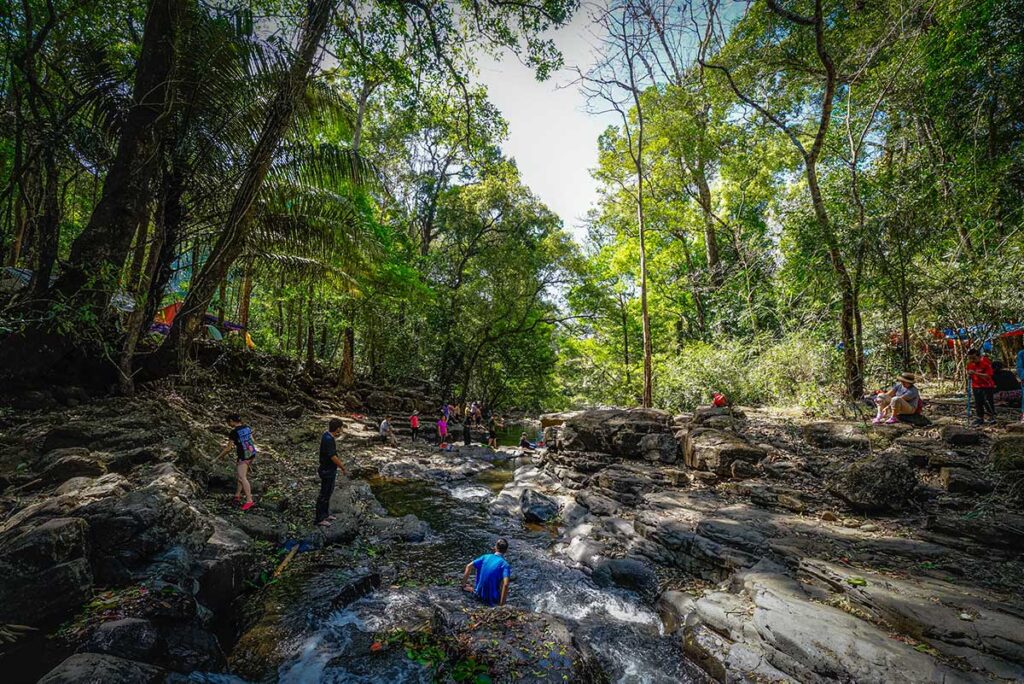
Flora & Fauna
The park shelters over 700 plant species, including valuable hardwoods such as rosewood and perfumed wood, as well as 278 medicinal plants used by local communities. Its dense forests and bamboo groves provide habitat for some of Vietnam’s most threatened wildlife: yellow-cheeked gibbons, black-shanked doucs, gaurs, sun bears, hornbills, and pangolins. Birdwatchers may encounter species like Germain’s peacock pheasant or the elusive orange-necked partridge. Bu Gia Map is also an active site for conservation efforts, with animals such as pangolins, hornbills, and tortoises regularly rescued and released back into the wild.
Why it’s unique
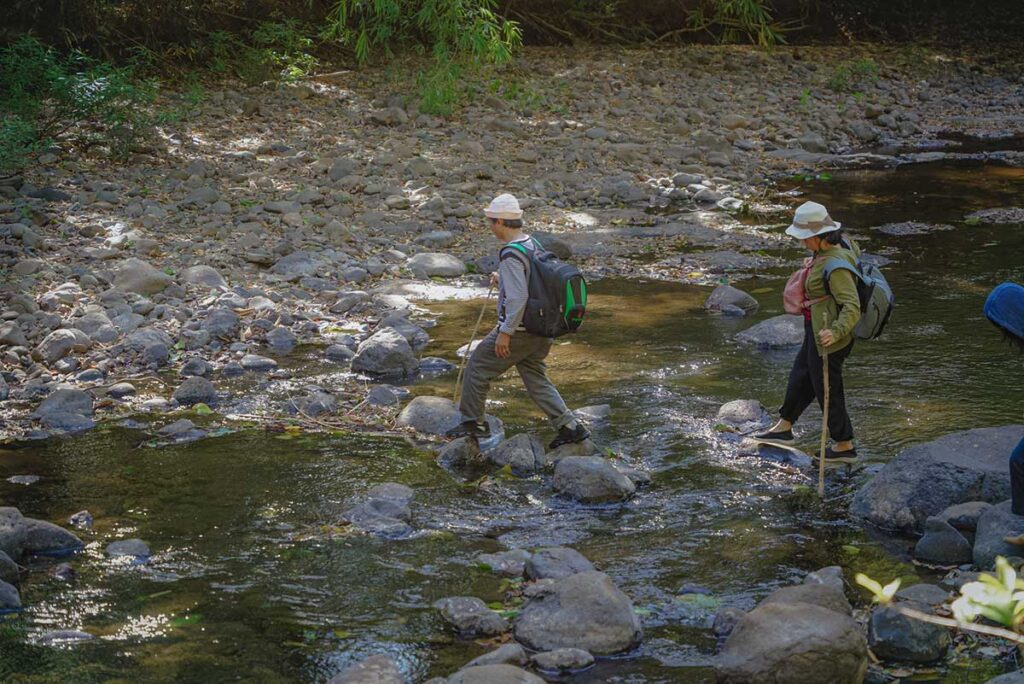
What sets Bu Gia Map apart from better-known national parks is its raw, untamed character. Tourism here is minimal, meaning fewer facilities but a far more authentic sense of wilderness. For adventurous travelers, it offers a rare chance to experience Vietnam’s forests without crowds. The park also holds a layer of historical significance, as parts of it were once strategic bases during the Vietnam War.
Things to do in Bu Gia Map National Park
Despite its remoteness, Bu Gia Map offers a handful of rewarding activities for adventurous travelers. Most of these experiences are arranged with park rangers or local guides, as there are no self-guided trails or tourist infrastructure.
1. Trekking with rangers
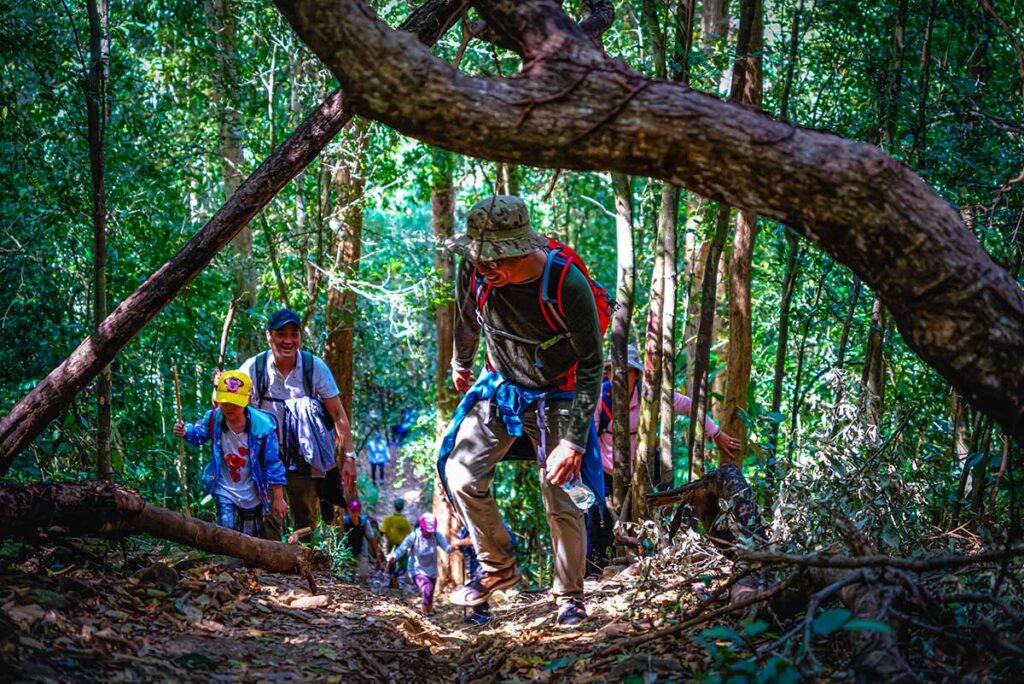
There are no marked or maintained trails inside the park, so you must hire a ranger or guide to go trekking. Options range from short day hikes to multi-day jungle expeditions that include river crossings, bamboo forests, and small waterfalls. Trails can be challenging, especially in the rainy season when mud and leeches become common. Trekking here is not about comfort—it’s about immersing yourself in untouched wilderness.
2. Camping in the jungle

Camping is usually combined with guided treks, with rangers arranging tents and basic gear. Spending a night in the forest means listening to the sounds of insects, frogs, and flowing streams under a clear starlit sky. Facilities are minimal, so you’ll need to bring personal essentials such as toiletries, snacks, and extra layers. Expect a raw, back-to-basics experience.
3. Dak Mai Waterfall

The Dak Mai Waterfall is the park’s best-known natural feature. Flowing over layers of basalt rock, it has water all year round and is most impressive during the rainy season. Access is relatively easy—cars and motorbikes can reach close to the base—but reviews often mention trash and poor maintenance at the site. Still, it remains one of the most scenic spots in Binh Phuoc Province and a refreshing stop if you’re exploring the area.
4. Motorbike or car drive through the park

For many travelers, the easiest way to experience Bu Gia Map is simply driving along the Ho Chi Minh Road (DT741), which cuts through part of the park. This route winds past quiet bamboo forests and small streams, offering a peaceful glimpse of the landscape without needing a guide. It’s especially popular with motorbike riders traveling between Ho Chi Minh City and the Central Highlands.
5.Wildlife & Rescue center visit

Near the park entrance, you can stop at the animal rescue and conservation center, where injured or trafficked animals such as pangolins, hornbills, and turtles are cared for before release. It’s a small but meaningful visit that shows the park’s conservation role beyond tourism, and it gives travelers a closer look at species they might not encounter in the wild.
Best time to visit Bu Gia Map National Park
The park’s atmosphere and accessibility vary widely by season, so timing makes a big difference to your experience.
- Dry Season (November–April) – The most practical time for trekking and camping. Trails are drier, rivers are easier to cross, and leeches are minimal. This is the recommended season for first-time visitors.
- Rainy Season (May–October) – The forest is at its most vibrant, waterfalls are stronger, and wildlife activity is higher. However, expect slippery trails, swollen streams, and many leeches. Trekking is more challenging during this time.
- Butterfly Migration (April–May) – Millions of butterflies pass through the forest, creating a unique and colorful spectacle.
- Waterfalls – Most beautiful in the rainy months, though water flows year-round at Dak Mai Waterfall.
Visiting tips
Planning a trip to Bu Gia Map requires more preparation than most national parks in Vietnam. Below are the key things to know before you go.
How to get there
Bu Gia Map is about 210 km from Ho Chi Minh City—a journey of around 5–6 hours.
- Most visitors arrive by motorbike, especially those traveling along the Ho Chi Minh Road.
- A private car with driver is the only realistic option for non-riders.
Guides & Tours
- Trekking is only possible with a ranger or guide, as there are no marked trails.
- English-speaking guides are rare and arrangements must be made well in advance.
- Don’t expect to just arrive and find a tour on the spot—this is a very remote destination.
What to bring
- Essentials: Food, plenty of drinking water, insect repellent, and a small medical kit.
- Trekking: Good hiking shoes with grip, rain protection, and camping basics (check with your guide what is provided).
- Other: Toiletries, snacks, and a power bank, as there are no shops or services once inside the park.
Safety & Practical notes
- Trails are unmarked—never attempt to trek alone.
- Use caution around waterfalls: deep water, no lifeguards, and slippery rocks.
- Road conditions are poor in places, with narrow, degraded surfaces.
- Follow park rules: no littering, no damaging trees, and respect the natural environment.
Is Bu Gia Map National Park worth visiting?
Bu Gia Map is one of the wildest and least developed national parks in Vietnam, which makes it both rewarding and challenging.
Pros: The park offers raw, untouched nature with dense forests, rare wildlife, seasonal butterfly migrations, and waterfalls like Dak Mai. Its remoteness guarantees a true off-the-beaten-path experience, far from mass tourism.
Cons: That same remoteness also makes it difficult to visit. Infrastructure is minimal, tours and guides must be arranged well in advance, and English-speaking support is rare. Popular spots such as waterfalls can suffer from litter, and trekking conditions are tough during the rainy season.
Honest take: Bu Gia Map is best suited for adventurous travelers—particularly motorbike riders and expats based in Ho Chi Minh City—who are looking for a raw, unfiltered nature experience. For most casual tourists, other parks like Cuc Phuong, Cat Tien, or Bach Ma are easier to reach, better organized, and more convenient while still offering rich nature and wildlife.
